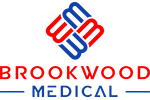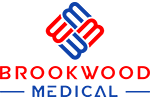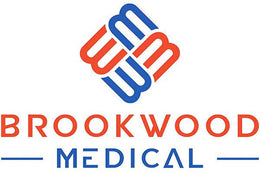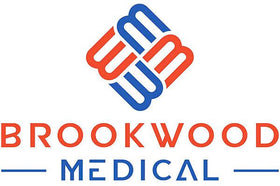Global Trends in Face Mask Usage: A Closer Look

Overview
The blog explores the rise of face masks in public health, driven by government policies, public awareness, and the COVID-19 pandemic. It highlights global patterns of mask usage, economic impacts, environmental concerns, and the future of mask-wearing. Key points include Asia's tradition of mask use, varying responses in Europe and the Americas, increased manufacturing and e-commerce growth, and the need for biodegradable alternatives and improved recycling programs. The article emphasizes the importance of education and cultural adaptation in shaping future mask practices for public health.
Frequently Asked Questions
1. What has influenced the rise of face masks in public health?
2. How have different regions responded to mask usage?
3. What are the economic impacts of the increased demand for masks?
4. What are the environmental concerns regarding disposable masks?
5. Will mask usage continue in the future?
In recent years, the world has witnessed a monumental shift in health and hygiene practices due to various global health challenges. Among these changes, the use of masks, particularly disposable KN95 masks, has gained prominence. This blog aims to examine current trends in face mask usage across different regions, the reasons behind these trends, and how they can influence public health strategies. Join us as we explore the fascinating world of face masks!
The Rise of Face Masks in Public Health
As the COVID-19 pandemic took hold in early 2020, face masks became a central part of the global conversation surrounding health and safety. Public health authorities around the world recommended wearing masks to curb the spread of the virus, leading to increased demand for various forms of masks, including disposable KN95 masks. But what exactly drove this trend?
Government Policies and Recommendations
Governments worldwide instituted policies mandating the use of masks in public spaces. For instance, countries like Taiwan and South Korea effectively employed mask mandates early in the pandemic, resulting in lower transmission rates. These actions but were not solely reactive. They were the culmination of years of research demonstrating how mask usage can significantly reduce the spread of infectious diseases.
Public Awareness and Acceptance
With the help of social media and widespread news coverage, public awareness of the advantages of wearing masks grew. Campaigns to promote the use of disposable KN95 masks and other forms of protective gear helped to normalize their usage. As people became more educated about the benefits of mask-wearing, acceptance rose, and in many places, it is now a common sight to see individuals wearing masks even in non-mandatory situations.
Patterns of Mask Usage Around the World
The adoption of face masks has not been uniform across the globe. Different regions exhibit unique trends influenced by cultural, social, and economic factors. Let's delve into some notable trends observed around the world.
Asia: A Long-standing Tradition
In many Asian countries, such as Japan and China, wearing masks is already a part of daily life, even outside of pandemic situations. People in these regions often wear masks to prevent the spread of colds, to protect against air pollution, or simply as a courtesy when feeling unwell. The COVID-19 pandemic took this pre-existing behavior and amplified it, leading to a significant increase in the consumption of disposable KN95 masks.
Europe: Varied Responses to Mask Mandates
In Europe, responses to mask mandates have differed widely. Countries like Germany and Italy embraced mask-wearing as a public health necessity, while others struggled with compliance. Economic factors also played a role. In economically stable nations, masks were quickly adopted as a protective measure, whereas in countries facing economic difficulties, the availability and affordability of quality masks like disposable KN95 masks became a critical issue.
The Americas: A Mixed Bag of Attitudes
In North America, the response to mask-wearing has been quite mixed. In the USA, face masks became a topic of political debate, with varying levels of acceptance and compliance depending on the political landscape. In contrast, Canada experienced a more unified approach to mask usage, with recommendations translating into higher compliance rates. In South America, mask-wearing has been broadly accepted as a necessary precaution, with countries like Brazil demonstrating creative solutions to provide masks to their populations.
The Economic Impact of Face Mask Trends
The surge in demand for disposable KN95 masks has led to considerable economic effects. The global face mask market has exploded, creating new opportunities for manufacturers, suppliers, and retailers alike.
Increased Manufacturing and Supply Chain Adjustments
To meet the rising demand, manufacturers around the world ramped up production of disposable KN95 masks. New companies emerged, while established businesses redirected their production capabilities to focus on masks and personal protective equipment (PPE). This shift has required significant adjustments to supply chains, including sourcing raw materials and distribution networks.
Opportunities for E-Commerce Growth
With traditional retail disrupted, e-commerce has flourished as a primary avenue for mask sales. Websites like Brookwood Med have seen a surge in traffic and sales from consumers seeking to purchase quality masks from the comfort of their homes. Online shopping platforms have become essential for people looking for safe and reliable health products.
Environmental Considerations
While disposable KN95 masks offer essential protection, their single-use nature raises concerns about environmental sustainability. Millions of masks end up in landfills, raising questions about waste management and pollution.
Biodegradable Alternatives
In response to these environmental challenges, there has been a growing interest in biodegradable masks and sustainable materials. Innovations in mask design that incorporate eco-friendly materials aim to reduce the ecological footprint while still providing adequate protection. Educating the public about proper disposal methods has also become imperative to mitigate the impact of disposable masks on the environment.
Improving Recycling Programs
Several organizations and municipalities are working on recycling programs for used masks. Initiatives to collect and recycle masks aim to close the loop and minimize waste, highlighting the need for a comprehensive approach to mask usage and disposal.
The Future of Mask Usage
As we look toward the future, the question remains: will face masks continue to be a part of our daily lives? Experts suggest that even as pandemic fears subside, mask-wearing might persist in certain contexts, particularly during flu seasons or in crowded public places.
Public Health Recommendations
Health authorities may recommend the continuous use of masks as a precautionary measure, especially for vulnerable populations. Disposable KN95 masks, known for their high filtration efficiency, could remain in demand as a reliable option for those prioritizing health in public interactions.
Cultural Adaptation
In countries where mask-wearing has become normalized, individuals might retain habits formed during the pandemic. A cultural adaptation towards wearing masks during illness, or even seasonal shifts in public health advisories, could lead to more permanent changes in behavior.
Empowering Communities Through Education
The ongoing education regarding the effectiveness of mask-wearing is crucial in shaping future practices. Awareness campaigns that focus on the necessity of wearing disposable KN95 masks, especially during outbreaks of respiratory illnesses, can empower communities to take proactive steps in safeguarding their health.
The Role of Schools and Organizations
Institutions, such as schools and workplaces, play an essential role in shaping attitudes towards mask usage. Engaging students and employees through programs that emphasize health and hygiene can lead to a more health-conscious community overall.
Building a Toolbox for Public Health
The lessons learned from the pandemic are invaluable. We can fortify public health responses by integrating comprehensive mask education, emphasizing the importance of PPE, and developing strong community networks that support health initiatives.
Unlocking the Future of Health Security
The global experiences regarding face mask usage throughout the pandemic underscore the importance of preparedness and adaptability in public health conversations. As we move forward, understanding the various trends in mask usage will be crucial for developing long-term, sustainable strategies that prioritize the health of populations worldwide. By staying educated and aware of global trends, we can all contribute to building a healthier future for our communities.
Linked Product
KN95 Face Masks, CE Certified, 5PLY, Protective Mask, 5 Layer, Respirator
The KN95 Face Masks offer reliable protection with a five-layer filtration system, designed to filter out airborne particles effectively. CE certified, these masks ensure compliance with safety standards, making them suitable for various environments, including healthcare settings and daily use. Their comfortable fit and breathability enhance user experience, making them a practical choice for individuals navigating current global trends in face mask usage.
View Product





